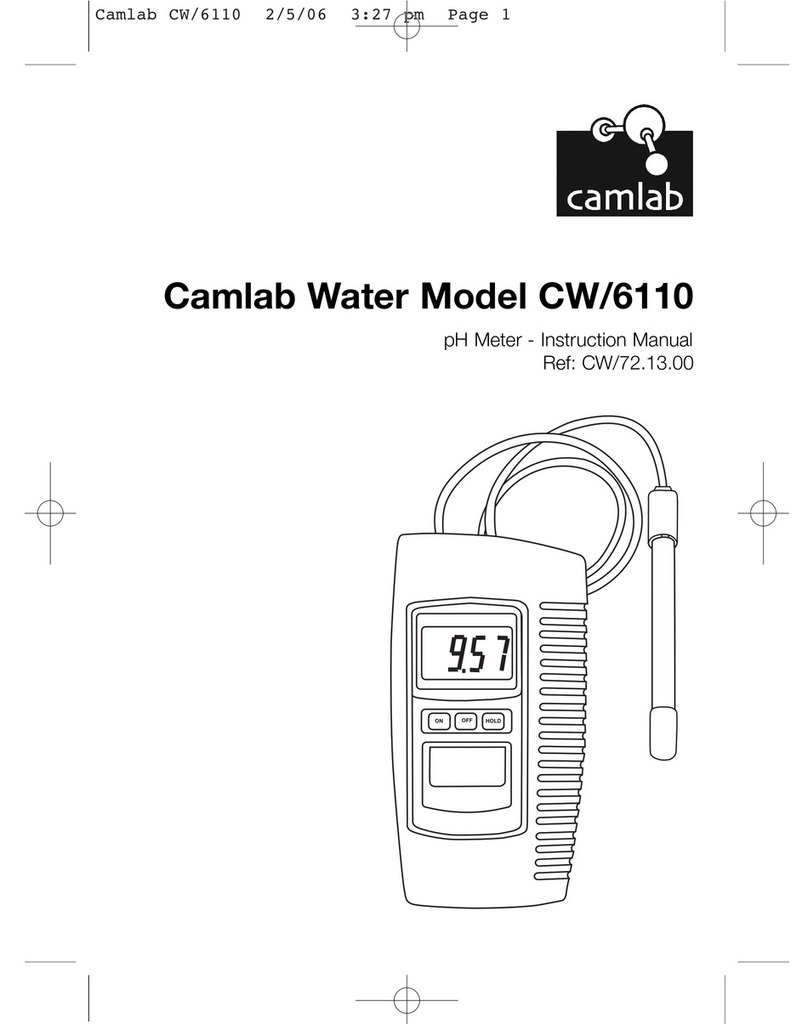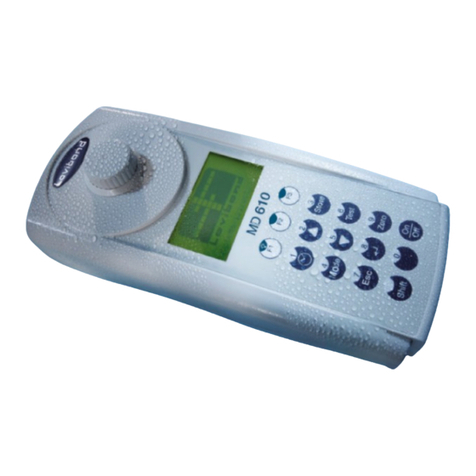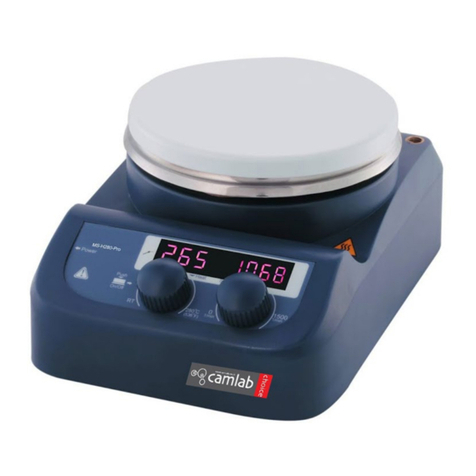
Routine Measurement
Press [On/Off]key.
Rinse out a clean vial three times with the sample to be tested.Fill the vial
with the sample and cap ensuring that all outside surfaces are clean and dry.
Place the vial in the sample chamber and align correctly.
Put on the sample chamber cover (light shield).
Press [Read]or [Read/Avg]key to start measurement.
Record the NTU value.
Read/Avg =Measurement with averaging.
User-Calibration
Press [Cal]key.
Place the <0.1 NTU standard in the sample chamber, making sure that
the marks are aligned. Put the sample chamber cover on and press
[Read/Avg].Reading starts automatically after count down.
Invert the 20 NTU standard and place it into the sample chamber, making
sure that the marks are aligned. Put the sample chamber cover on and press
[Read/Avg]key. Reading starts automatically after count down.
Invert the 200 NTU standard and place it into the sample chamber, making
sure that the marks are aligned. Put the sample chamber cover on and press
[Read/Avg]key. Reading starts automatically after count down.
Invert the 800 NTU standard and place it into the sample chamber, making
sure that the marks are aligned. Put the sample chamber cover on and press
[Read/Avg]key. Reading starts automatically after count down.
Press [ ] key to store or press [ESC]to cancel calibration.
1.
2.
3.
4.
5.
6.
1.
2.
3.
4.
5.
6.
Correct Storing and Handling Standards
T-CAL standards should always be stored in their original vial.
Store standards between 5 and 25°C (avoid prolonged exposure to temperatures exceeding 35°C).
Store away from direct sunlight. Vials should be stored in their original box which should be closed
when not being used.
Always allow the standard to acclimatise to ambient instrument temperature before use (not to exceed
35°C).
T-CAL Standards have a shelf life of minimum 12 month if stored correctly.
Using <0.1 NTU Standard
After delivery allow the vial to stand for least 24 hours before use.Never shake or invert this <0.1 NTU standard.
If the standard has been shaken it can take several hours for all the bubbles dissipate and we suggest the vial is
left for at least 24 hours as outlined above.If the standard has been inverted accidentally wait at least 15 minutes
before using.
Preparing and Using Standards –infrequent use
Note: These instructions apply to all standards excepted the <0.1 NTU standard. If you are using the <0.1 NTU
standard follow the instructions above.These instructions apply to standards that have been sitting undisturbed
for more than one week or to new standards.
Shake the standard vigorously for 2-3 minutes.
Let the vial stand undisturbed for 5 minutes.
Invert the vial between 5-10 times.
Immediately place the vial in the sample chamber and wait for 1 minute (count down).
Preparing and Using Standards –frequent use
Note: These instructions apply to all standards excepted the <0.1 NTU standard. If you are using the <0.1 NTU
standard follow the instructions given above.These instructions apply to frequently used standards (daily or
weekly usage).
Invert the vial 10 times.
Immediately place the vial in the sample chamber and wait for 1 minute (count down).
•
•
•
•
•
1.
2.
3.
4.
1.
2.
Short manual



































